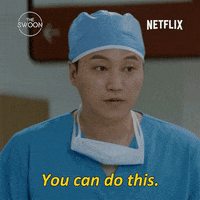/socialketchup/media/media_files/Aj51f7IZHzRyxj8vSMYs.png)
Translation is one of the most underrated and toughest job ever and here’s a reminder that we wouldn’t enjoy half the K-dramas the way we do if the translation wasn’t done right!
When I first started watching K-dramas, I did not understand a single word of Korean and relied completely on the English translations. While the essence of the K-drama goes beyond the language and the old school romance reached right to my heart, there were certain intense scenes that were heavily dependent on translations indeed. Especially the ones that talk about their culture. So this often made me wonder if the right message is being sent across to the audiences. This curiosity pushed me to begin my journey of learning the language and two years down the line I do understand most of what’s being said on the screen and here’s what I have understood so far from it!
Most of the translation that you read on-screen is not the literal translation of what’s being said. Initially this made me feel weird about why translators don’t write exactly what’s being shown, it would help the audience better but as I stepped into their shoes, I understood why things cannot be spelled out literally. Every culture is different and the art of translating basically is to find the equivalent of certain words and phrases in each culture. For instance, the korean phrase ‘잘 부탁드립니다 (Jal Butakdarimnida)’ which literally translates to ‘I request you to take good care of me’ is used so differently in so many situations. If it’s someone’s first day at work it's either translated to ‘thank you’ or ‘I will do my best’ just so that you understand the spirit of the character and they don’t have to go in depth about why or how it’s really used in the Korean language.
/socialketchup/media/media_files/eBzmsLG4jR1WZvHL0PSI.jpg)
It made me understand that if we get into literal translations it could be confusing and stressful for the viewer adding to the task of watching and reading subtitles at the same time. It has to be smooth, crisp and to the point. Another example of this would be ‘좋은 하루 보내세요 (Joen Haru Bonaeseyo)’ which means ‘Have a nice day’ but the literal translation of it would be 'Please spend your whole day with good vibes'. Sounds a bit off, right? Translators need to have that instinct of what fits and what doesn’t. Case in point - Korean slangs like ‘Hwaiting’ which actually derive from English words like ‘fighting’ have a different meaning to it altogether. Hwaiting is used when someone wants to wish you luck or say ‘you got this’ compared to the English version fighting which means violence. This is why I gained immense respect for the art of translation and the translators who help millions of people around the world understand stories that deserve to be heard and seen on a larger scale. There’s actually even a Korean drama called Run-on where the female lead is a translator and it accurately portrays how it’s all done behind the scenes.

Translators and interpreters from all over the world make the language barrier feel shorter and shorter, and this is why it has helped the current Hallyu wave reach as many people as possible. K-drama translations in particular are done on a certain deadline. They watch each and every second of a frame minutely and translate every word to the best of their ability whilst keeping the moral of the story intact. It truly is an art form of its own and the reason why we can enjoy these K-dramas the way Korean native speakers would!
For more binge-centric content and reviews, follow us on @socialketchupbinge.
/socialketchup/media/agency_attachments/2025/01/15/2025-01-15t065936648z-magazine-logo-black.png)
/socialketchup/media/media_files/2025/12/16/sk-roundtable-desktop-leaderboard-1-2025-12-16-11-46-34.png)
 Follow Us
Follow Us